When we moved into our Southern California home in September 2008 the grass was dead or dying – a great opportunity to convert most of the lawn to native or drought resistant landscaping, which we also did at our San Diego home.
We’re going on three years now after planting, and the landscape is not only thriving but repopulating. (Update: Click here for photos after 8 years, although our yard is 10 years old now and doing great!)
The benefits
- Lower water bill – instead of watering the lawn 4 times/week, we turn off the irrigation in our rainy months and we’re down to watering once a month the remainder.
- No landscape service needed– the no-fuss plants generally take care of themselves.
- Create habitat – our landscaping offers a nice home also for a variety of butterflies, birds, lizards and insects (Click here for photos of wildlife attracted to our yards)
Some tips from our two experiences
Design
In both places we featured a dry steam bed, with rock ranging in size from boulders to river gravel. Plants among rocks are not only visually appealing but the plant roots remain cooler underneath the rocks. In our first home, we hired a landscaper to do the design and all the planting. Here we hired a local contractor for the rock work, and we purchased and planted the plants ourselves. Our design revolved around the original fountain and two dragon trees (dracaena draco), a unique low water tree from theCanary Islands. We used redwood mulch to cut down on weeds and water.
When to Plant
We did the rock work in December and planted in January. The best months for planting natives in warmer climates are late fall through early winter. Though landscapers say you can do anytime with adequate water, planting during the cooler months allow a strong root system to grow before the summer heat hits.
Why Natives?
Plants native to our area have adapted to the rainless months, so greatly reduce water needs. They also attract a host of wildlife and useful insects. A hummingbird claimed the new landscape soon after we planted, while pairs of California towhees daily work the ground, mining the pillbugs that multiplied under the mulch. Others include numerous ladybugs that eat the aphids, and an assortment of butterflies, and yes, plenty of bees. Because something higher up on the natural food chain takes advantage, there’s little worry about pests.
Favorite Plants
We prefer California native plants and their hybrids, but also use plants from other Mediterranean type climates. We also make exceptions: we left a little piece of grass under a flowering plum we wanted to keep, so we planted some blueberry and tomato plants to reap the extra water. For more info see later post
What’s done well in Southern California
For hot sunny areas:sages (particularly Cleveland), manzanita (all types), buckwheats (many varieties available, great for butterflies) ceanothus (dark star but others), grasses (deergrass, Mexican feather, blue-eyed grass), toyon, rosemary, yarrow, fremontia (flannel bush, very drought tolerant), penstemons, rosemary, fuschsias, and succulents such as agaves, dudleya, and yucca. Nevin’s Barberry is another favorite.

For shadier areas, consider currants (wide variety), redberry, mahonia (especially golden abundance), sedge, and Oregon grape.
How to replace grass
We had it easy – the grass was dead when we moved in. But you can stop watering the grass and allow it to die (good idea to tell your neighbors your plan) and either remove the top or follow with pre-emergent herbicide treatment to kill any grasses lurking underground. If you use pre-emergent, you must wait 6- 8 weeks before planting (otherwise it kills the plants you put in) – instead we removed the dead grass/roots layer and pulled new grass that came up.
Watering
The most important watering — the first time you plant. Water a lot (5-10 gallons!) and deeply so deep tap roots get established. It’s said you can’t water too much at planting. If you plant in late fall, you can get buy with very little water for six months. If it’s a hotter time, make sure the root ball stays moist for a couple months. Natives differ in how much water they like, but in general water once/weekly during the first summer, every other week through the second summer and once monthly the third. After several years, most natives can go without water, or can benefit from a occasional watering. There are some exceptions: for example, fremontias don’t require any summer water. Tree of Life Nursery has an online catalog that includes individual water needs.
Click here for a follow-up post I wrote on watering and planting natives.
Where to Purchase Plants and Resources
More and more local nurseries have rosemary, yarrow and some varieties of manzanita and ceanothus. Find botanical gardens to see natives in their natural setting, we have Rancho Santa Ana Botanical Garden in Claremont, with towering natives. If you live in our area, feel free to contact me for nurseries we used.
Here’s also some useful resources for California residents – but each state should have a local native plant society. Google native plant botanical garden and your state.
- Las Pilitas – www.laspilitas.com (great plant descriptions and planting instructions)
- California Native Plant Society – http://www.cnps.org/
- Tree of Life Nursery – www.californianativeplants.com
Happy planting!
In July 2011 we were awarded a local award in the Western WaterWise Landscape Contest sponsored by the Western Municipal Water District – even won some $$
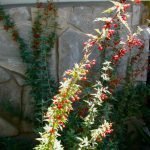

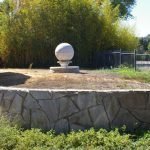
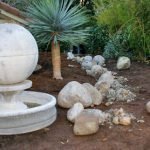
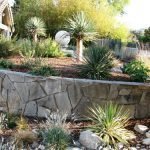
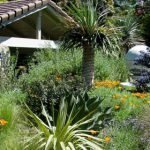
It still amazes me how much this yard has changed. What an awesome habitat.
I’m keeping track of the critters I’ve seen – up to two dozen…..
Is this your house? Gorgeous plantings!
yes it is, it’s been 3 yrs now since we replaced the grass so most plants are well on their way…